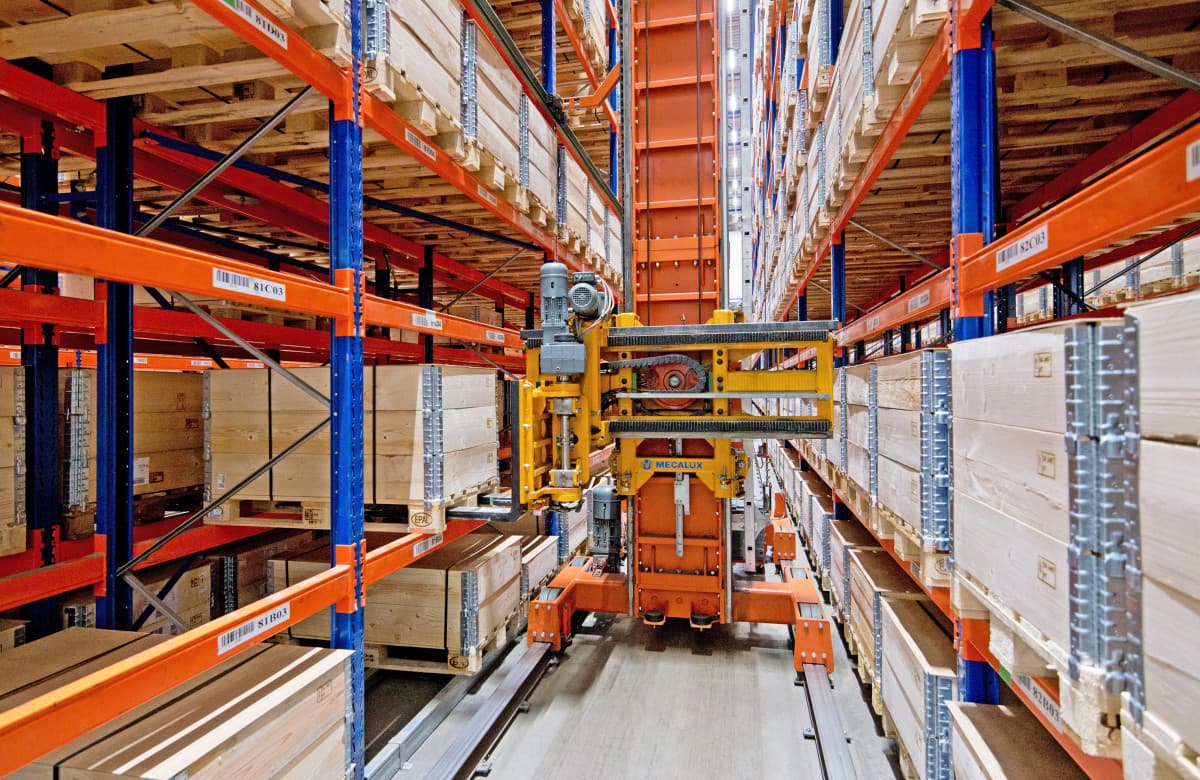The IKEA production plant underwent full automation while operating at full capacity.

IKEA Components, a subsidiary of Swedish multinational IKEA, is responsible for the packaging and delivery of furniture components and accessories. The production plant in Malacky has recently fully automated its warehouse part to increase operational efficiency. Without major disruption to ongoing operations, Mecalux seamlessly integrated a total of twelve three-sided pallet stackers and Easy WMS here. Pavol Masarovič, operations manager at IKEA Components, Slovakia, spoke about the details.
IKEA operates in 62 markets and has over 450 stores. What were the logistics processes like at IKEA Components before warehouse automation?
Before, all operations in our warehouse area were purely conventional. This means that operators performed all pallet movements using forklifts in standard racks or in racks with narrow aisles. We picked pallets from the production area and stacked them manually on racks in the warehouse. However, this type of warehouse operation requires more time, handling equipment and operators themselves. Therefore, we decided to automate certain aspects of this process.
Mecalux implemented an automated warehouse without disrupting operations. How did such a project come to fruition?
The main requirement we presented to Mecalux was to prepare and design the entire process so that there would be no disruption to warehouse operations during implementation. This was something we requested from day one. It was not possible to disrupt the production or logistics operations of one entire area. So the project was divided into four phases, in each of which Mecalux implemented three three-sided pallet stackers and extended certain parts of the conveyor routes. By splitting the project into different phases, the project was able to be completed while only affecting 25% of the warehouse capacity during each phase. In this way, the work on the stacker implementation project did not significantly affect us or limit our daily activity.
What benefits has IKEA Components gained with the AS/RS automatic stacker and retriever system?
It has brought us much more flexibility and efficiency in operations, starting with pallet movements. Previously, we had to do all the movements using manual operations. Now, we are virtually completely unconcerned with transport and pallet movements because automation does it for us. This allows us to concentrate on warehouse management. Storing products in AS/RS has given us a much better overview of our inventory, and we have also eliminated errors to a minimum compared to conventional warehouse management.
AS/RS is managed using Mecalux Easy WMS, this software oversees all warehouse processes. For example, when it's time to ship pallets to our clients, it automatically issues instructions for picking them. The pallets then leave the AS/RS fully automatically. We have seen the benefits of automated systems first-hand, especially during the pandemic. During this period, many staff were absent, but the system worked virtually without interference and we were able to continue to meet our clients' needs and deliver all orders on time.
What does the pallet path look like in the AS/RS and then at the exit?
All pallets coming into the system are destined for subsequent distribution and come from our production area. They are transported from this area by AGV trucks that place the pallets on a conveyor. The pallets then arrive at the pallet control station. Mecalux Easy WMS then assigns the goods to a specific position and sets the task of automatically moving the pallet to one location in 12 storage aisles. When a pallet needs to be shipped to a client, the entire process is automated from the moment the operator gives the order to ship. Depending on the destination, pallets leave the AS/RS on a specific conveyor route and head to one of the loading areas by the shortest possible route.
How would you evaluate this transformation of intralogistics?
The warehouse transformation project in Malacky was a bold undertaking that took almost three years. We faced several challenges, but we handled them all very professionally, without losing sight of our goal: to increase the efficiency and effectiveness of our processes. The collaboration with Mecalux was highly professional and we had a great working relationship. And in the end, we completed the task successfully. Many people were involved in the project, both from Mecalux and from our side. Overall, I dare say it was a great project for everyone involved. Everyone learned something new and we all gained new skills and experience which will serve us well in the future.
Interested in this article? Check out our blog!
Source: IKEA, Systémy logistiky





